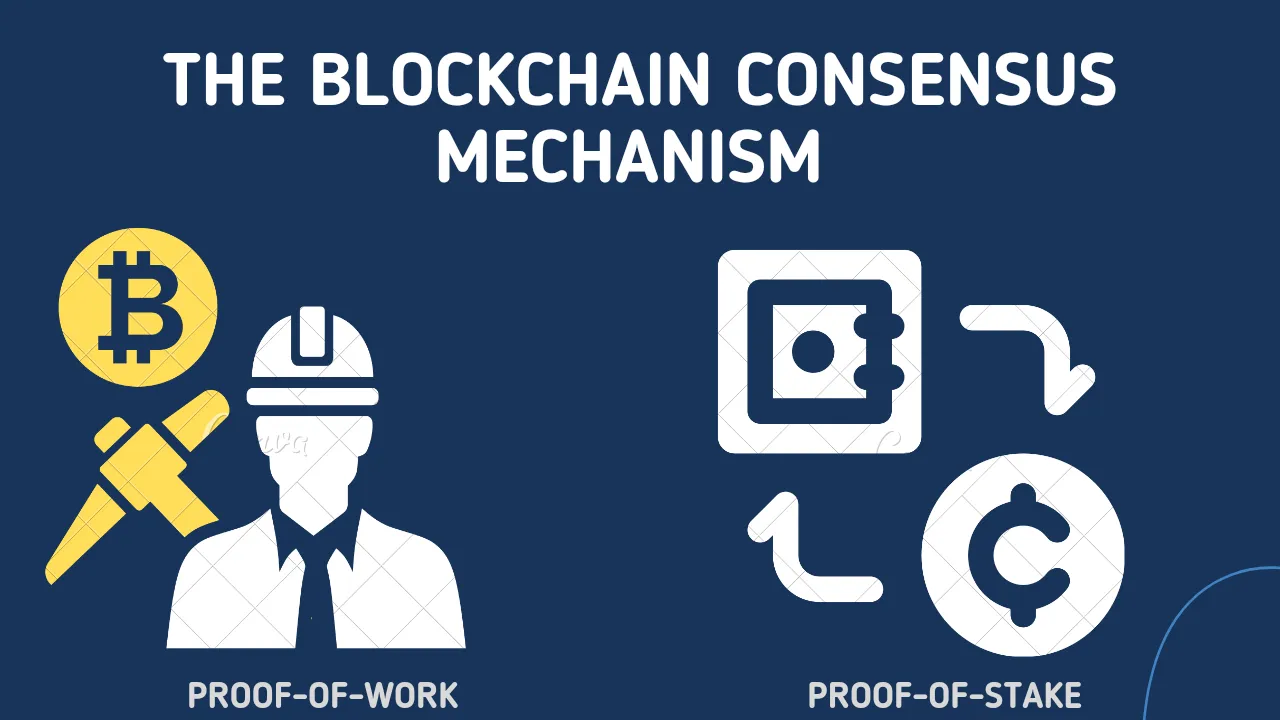
Hello guys, welcome to my finance blog and today I'll be discussing the blockchain consensus mechanism, I'll focus on the two most popular consensus mechanism which are Proof-Of-Work (POS) and Proof-Of-Stake (POS). I'll go on the explain how the two mechanism works, the different between them, and the one that is better in term of scaling capacity.
The Difference Between Proof-Of-Work & Proof-Of-Stake
We must first comprehend the definition and operation of Proof-of-Work and Proof-of-Stake in order to comprehend their differences.
In a Proof-Of-Work consensus mechanism, miners use a powerful computers to solve a complex puzzle in order to validate a transaction (block) on the blockchain. In exchange, they are rewarded with the chain's coin. For example Bitcoin uses the Proof-Of-Work mechanism to validate blocks and verify on the transaction on the chain, the miners uses a powerful mining machine, this mining machine solve the mathematical puzzle and the miner get 6.25 BTC as reward.
Proof-Of- Stake is a sort of consensus mechanism in which validators are chosen at random to verify transactions or validate blocks on the blockchain and are subsequently rewarded with the blockchain coins. In other to become a validator you need to stake the chain's token, the amount you need to stake varies on different chain.. The Ethereum chain
which recently merge from PoW to PoS for example requires the a user to stake 32 ETH to become a validator... Some chain on the other hand doesn't have fixed amount, but the chances of validating or verify the next block depends on the amount you stake... The more coin you stake the higher your chances of validating the next block, the higher your chances the higher the rewards earn for validating the blocks.
Now that we know how Proof-Of-Work and Proof-of-Stake work, let's briefly discuss their differences.
In Proof-Of-Work the block creator are called miners while in Proof-Of-Stake they are called validators.
In the Proof-Of-Work mechanism the miners needs a powerful computer to validate transactions on the chain while in Proof-Of-Stake the validator just need to stake the token in other to verify or validate transactions on the blockchain.
Another significant difference is the cost of mining. With Proof-Of-Work, you must take into account the cost of the computer and the electricity used to run it, whereas with Proof-Of-Stake, you only need to purchase the coin and stake. Out of the thousands of miners out there, only the first miner to validate the blocks on Proof-Of-Work is rewarded, therefore in order to compete and become the first miner to validate you need to get the most latest and potent mining machine. This is very expensive, not to mention the electricity needed to run the machine.
The better In Term Of Scaling Capacity?
Let's now talk about which of the two consensus mechanisms has a superior scalability capacity.
I'd want to simply explain what scalability is.
Scalability is a system's capacity to support or manage numerous transactions that are being processed at once.
In terms of scaling, Proof-of-Stake is superior to Proof-of-Work since it requires less time to validate transactions on the blockchain and can process more transactions at once.
Cardano (ADA), for instance, employs Proof-Of-Stake to validate transactions on its blockchain and can support up to 1000 TPS (Transactions per second), in contrast to Bitcoin, which uses Proof-Of-Work and can only support 3–7 TPS (Transactions per second).
To read more about the Proof-Of-Work and Proof-Of-Stake consensus mechanism refer to the source below 👇